Neurons and Synaptic Transmission: Exam 2
1/21
There's no tags or description
Looks like no tags are added yet.
Name | Mastery | Learn | Test | Matching | Spaced |
|---|
No study sessions yet.
22 Terms
What are the primary functions of neurons?
Neurons carry information throughout the body using electrical and chemical signals to coordinate necessary life functions.
What are the three main parts of a neuron?
1. Cell body (contains nucleus and organelles), 2. Dendrites (receive incoming signals), 3. Axon (conducts action potential away from the cell body).
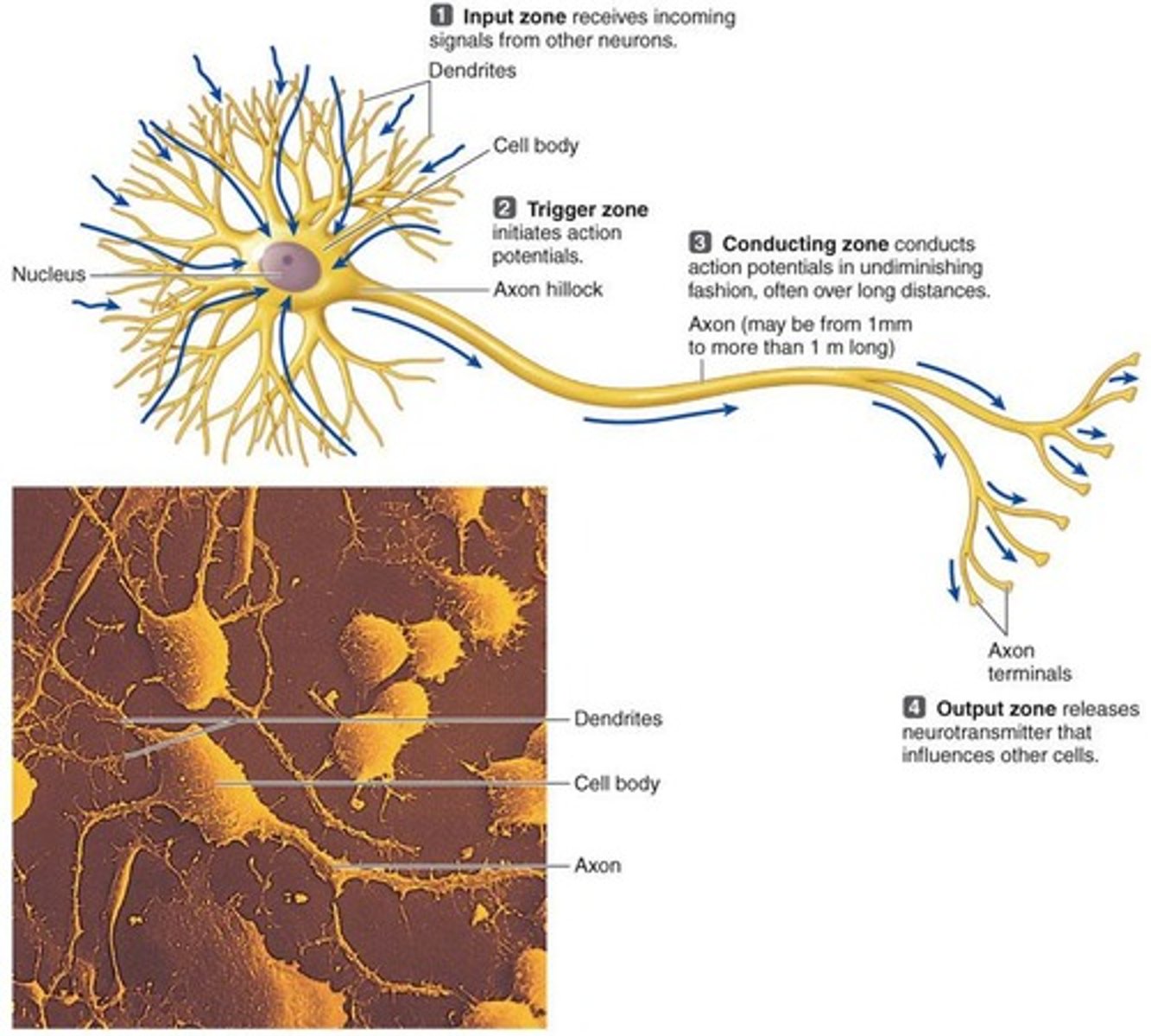
What principle governs action potential (AP) generation?
The All or Nothing Principle states that APs occur in an all-or-none fashion depending on the strength of the local potential of the stimulus.
What factors influence action potential velocity?
1. Myelination of the fiber, 2. Fiber diameter.
What is contiguous conduction?
A method of AP conduction where the AP elicits depolarization in nearby membrane areas, similar to falling dominos.
What are the roles of Schwann cells and oligodendrocytes?
Schwann cells (in the PNS) and oligodendrocytes (in the CNS) create myelin, which insulates axons and speeds up action potential conduction.
What are the two types of synaptic connections?
1. Electrical synapses (gap junctions), 2. Chemical synapses (involving neurotransmitters).
How do neurotransmitters affect postsynaptic neurons?
Neurotransmitters can be either excitatory (EPSP) or inhibitory (IPSP), influencing the likelihood of action potential firing.
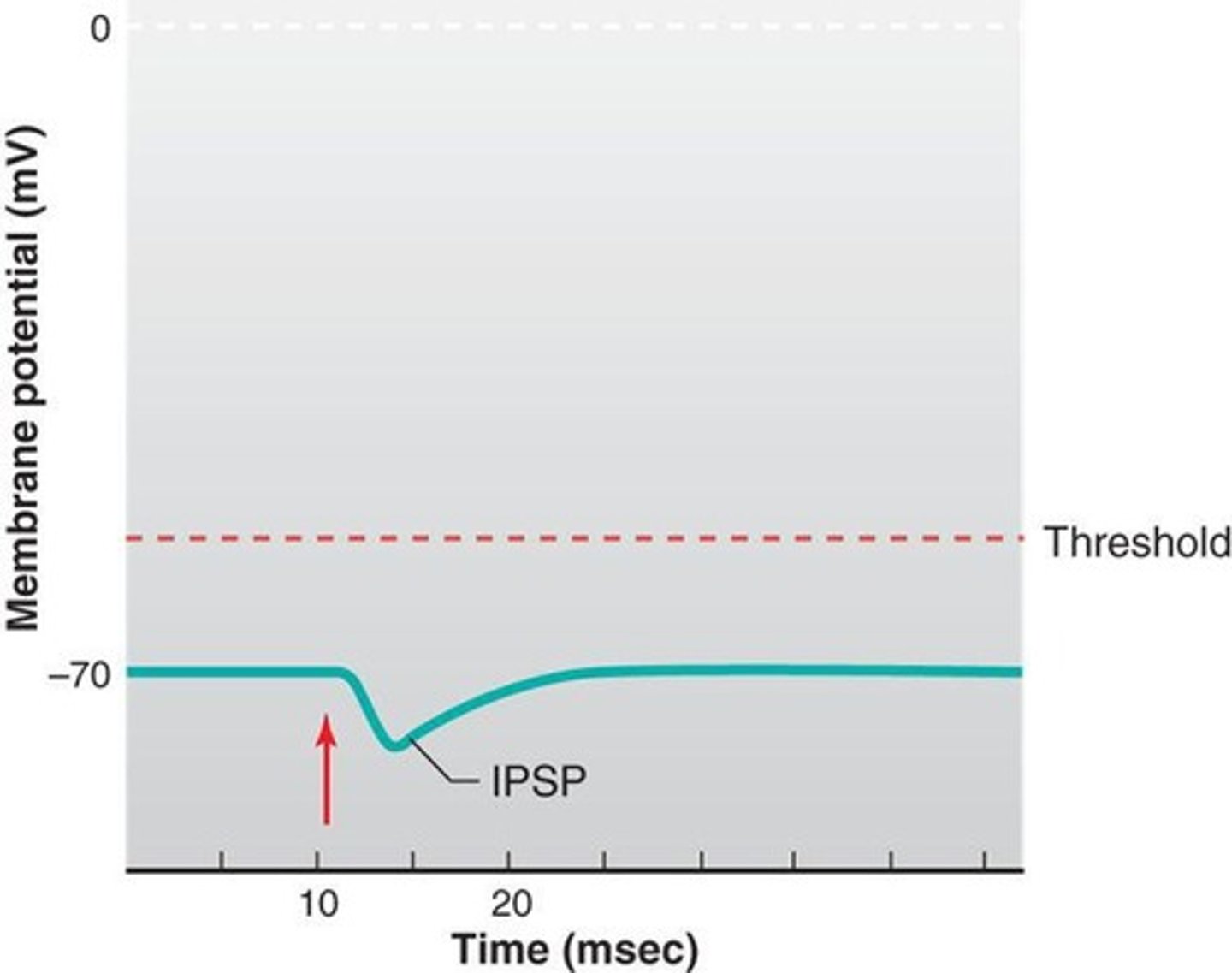
What is the Grand Postsynaptic Potential?
The total effect of EPSPs and IPSPs on a postsynaptic neuron.
What is spatial summation?
The process where EPSPs or IPSPs summate over distance, affecting the postsynaptic neuron's decision to fire.
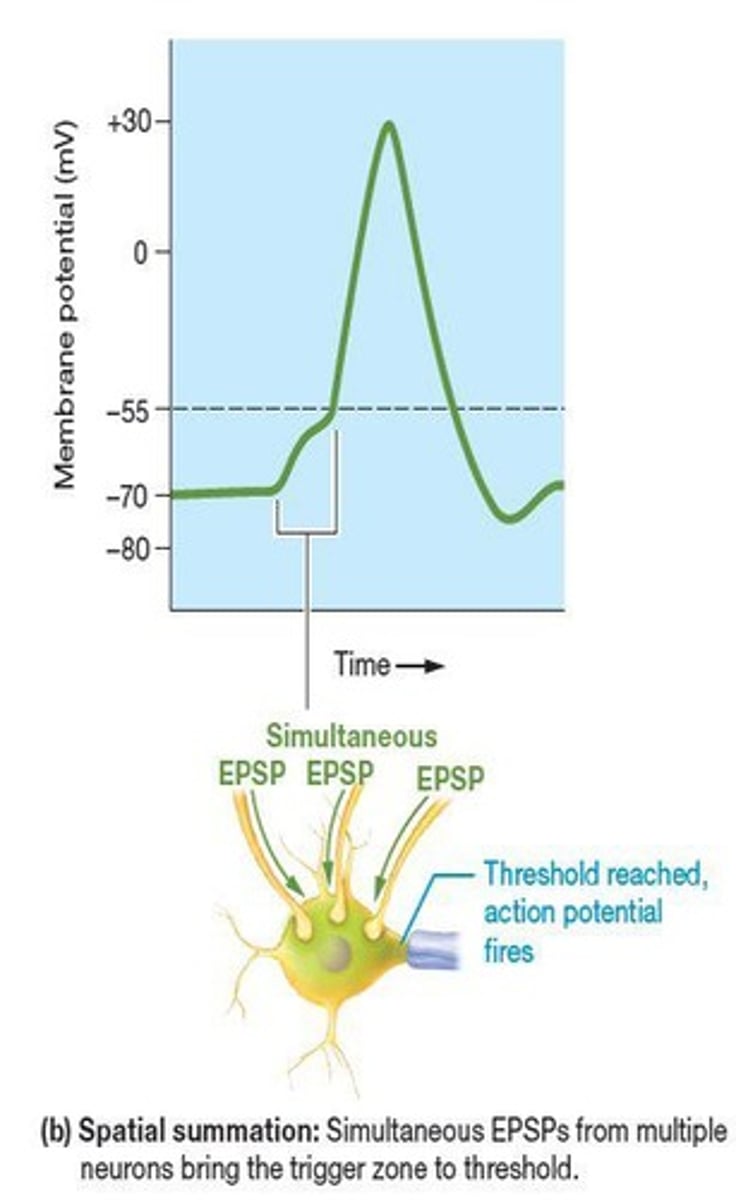
What happens when a postsynaptic neuron integrates incoming information?
The neuron computes all inputs and decides whether to fire an action potential based on the total graded potentials.
What is the difference between EPSP and IPSP?
EPSP (excitatory postsynaptic potential) brings the membrane closer to threshold, while IPSP (inhibitory postsynaptic potential) moves it further away.
What is the role of synaptic vesicles in chemical synapses?
Synaptic vesicles store neurotransmitters that are released into the synaptic cleft to affect the postsynaptic neuron.
What is the function of voltage-gated Na+ channels in saltatory conduction?
They are concentrated at the nodes of Ranvier and facilitate rapid depolarization during action potential propagation.
How does fiber diameter affect action potential velocity?
Increased fiber diameter decreases resistance and increases the velocity of action potential propagation.
What are the three functional regions of a neuron?
1. Receptive region (dendrites and cell body), 2. Conducting region (axon), 3. Secretory region (axon terminal).
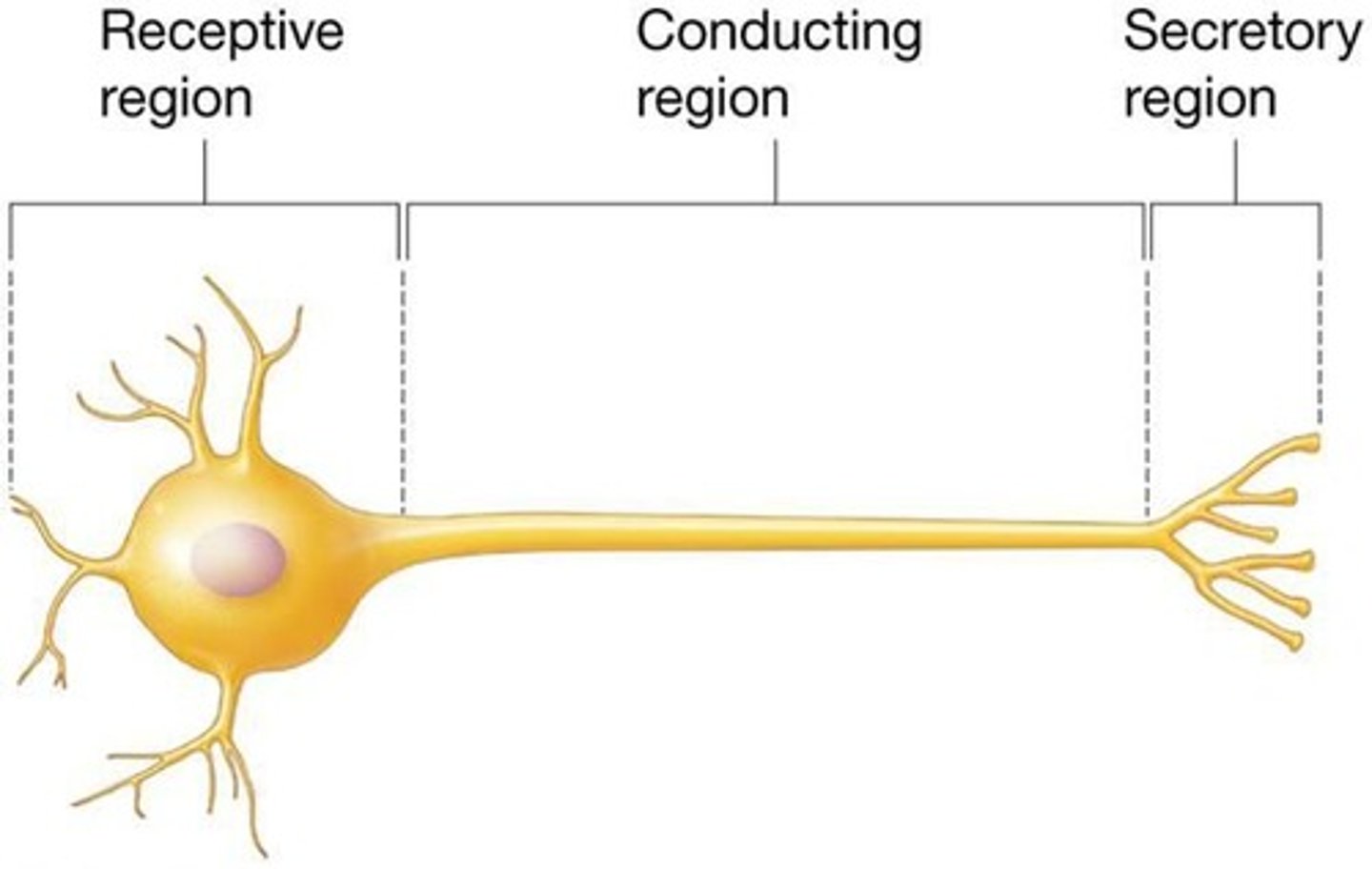
What is the role of the refractory period in action potential propagation?
The refractory period limits the frequency of action potentials and ensures one-way travel of the impulse.
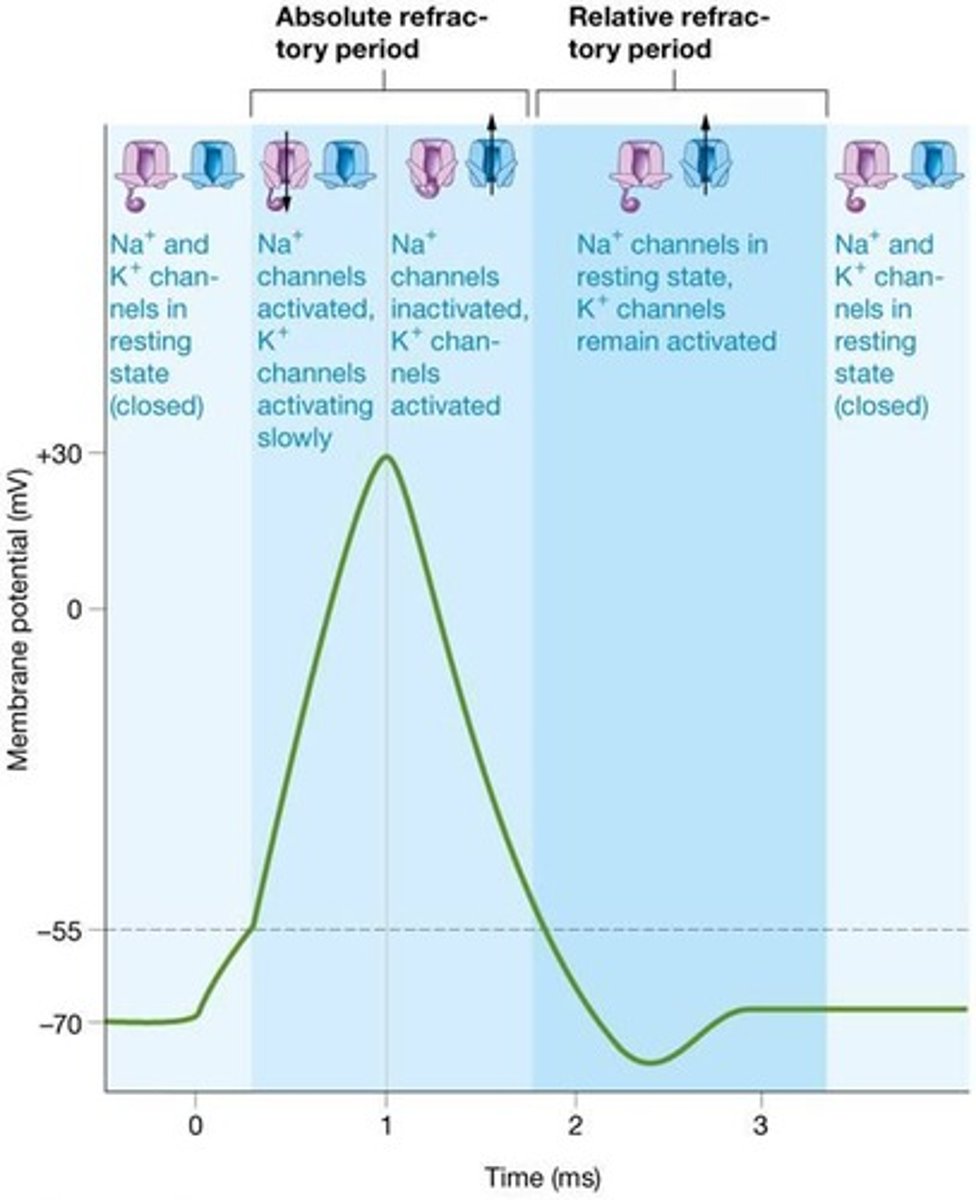
What is saltatory conduction?
A faster method of AP conduction that occurs on myelinated fibers, allowing the impulse to skip along the nerve.
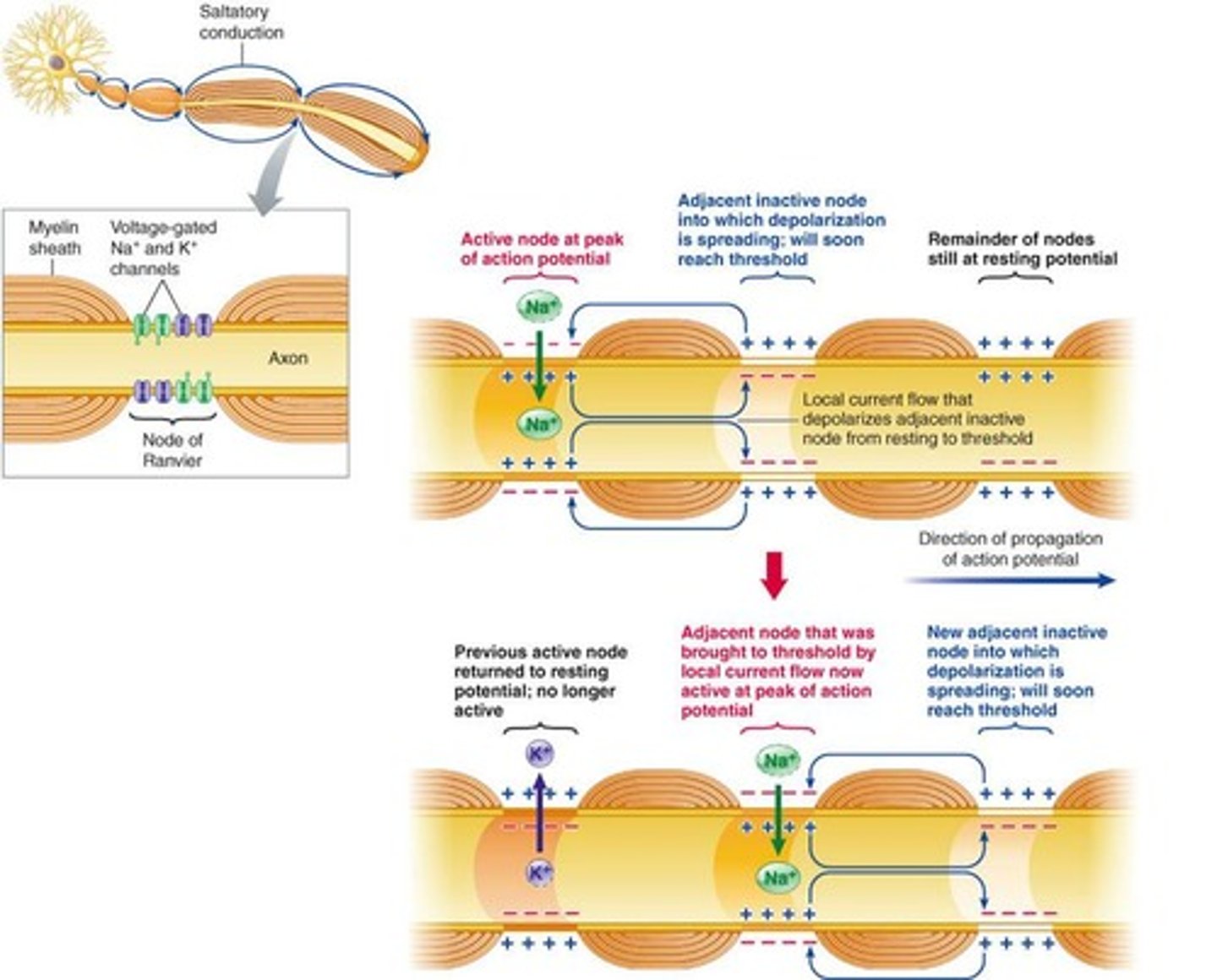
What is a synapse?
The connection between two neurons, consisting of a presynaptic neuron, a postsynaptic neuron, and the extracellular space.
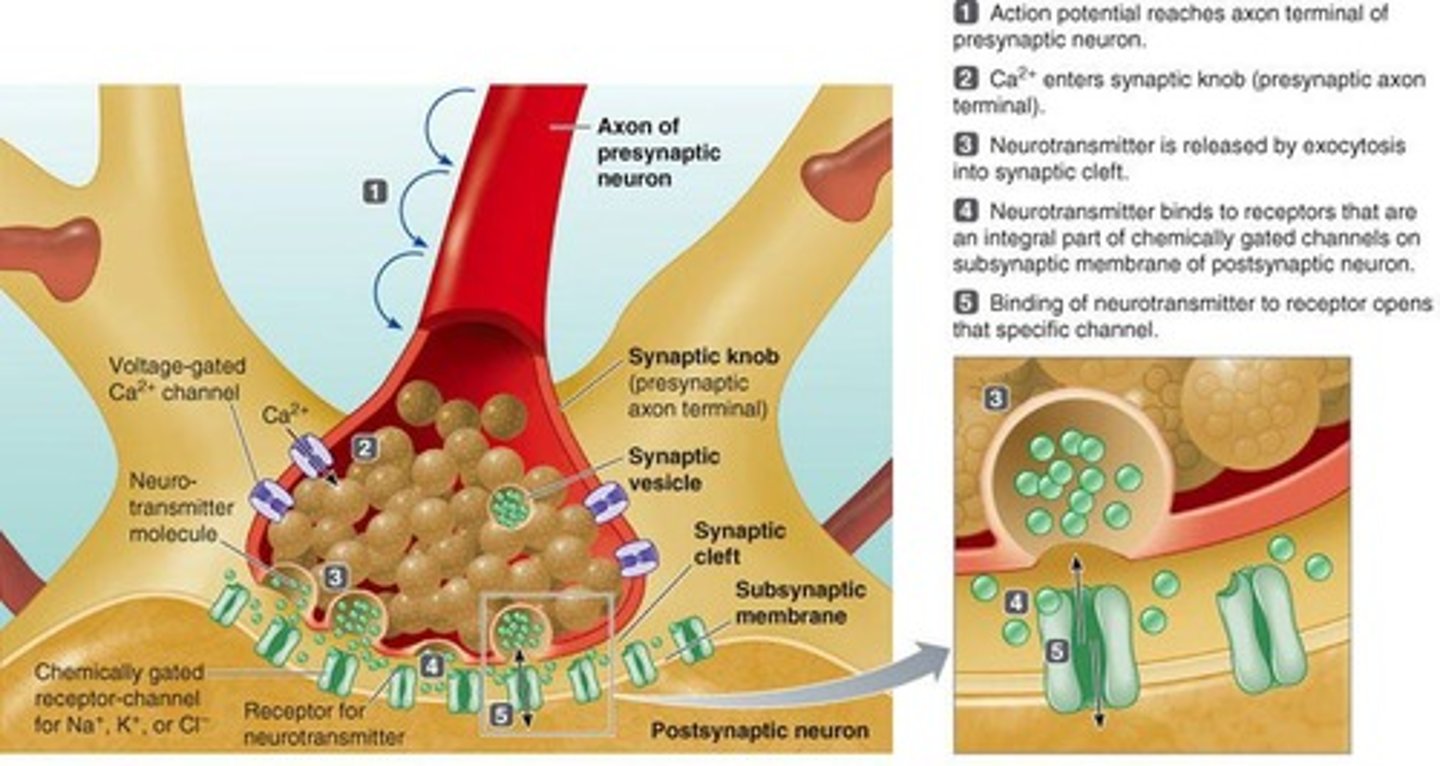
What is temporal summation?
The process where successive EPSPs increase the likelihood of eliciting an action potential by summing over time.
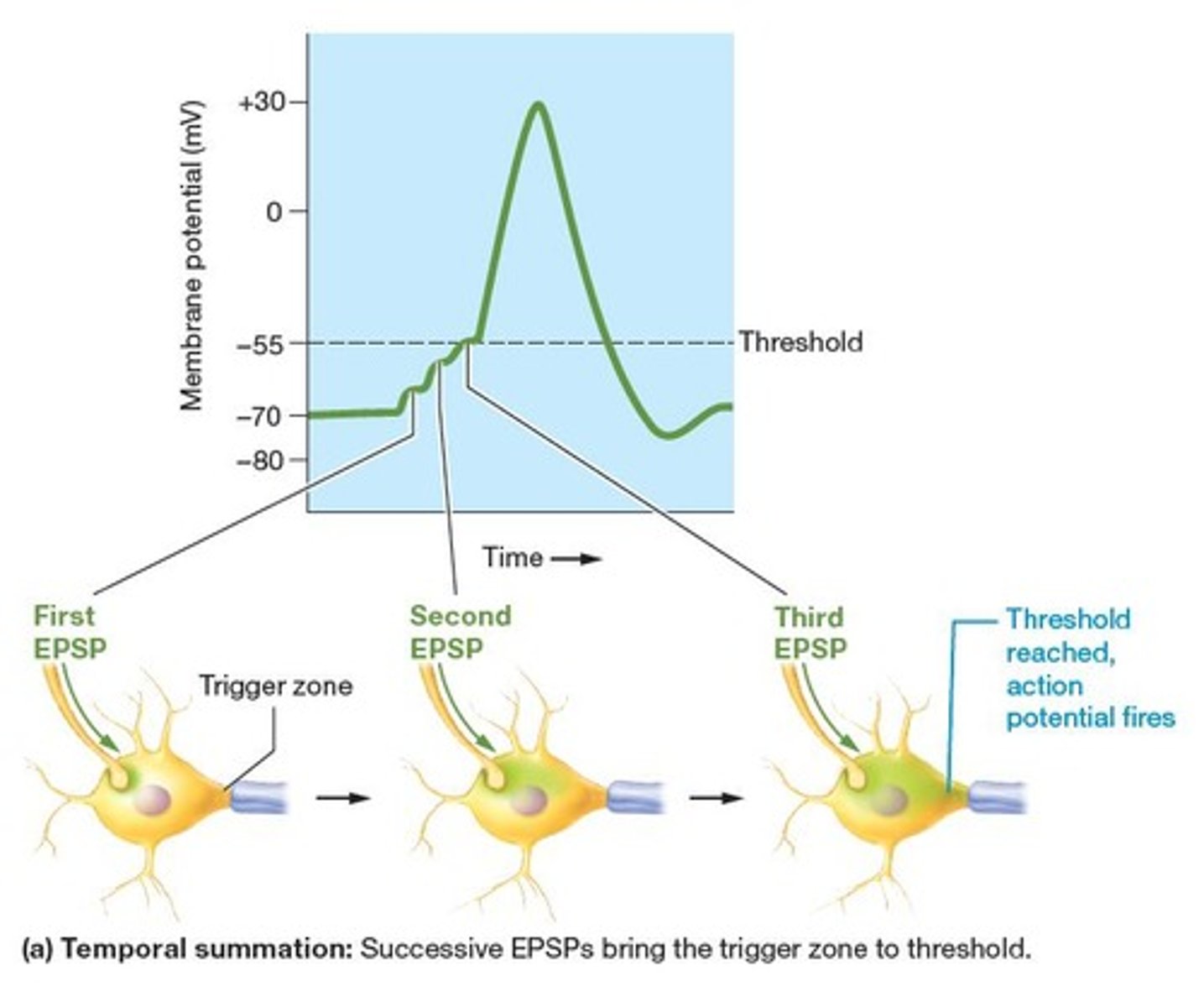
What is the significance of the axon hillock in action potential generation?
The axon hillock is where action potentials are generated and propagate down the axon.
Still learning (15)
You've started learning these terms. Keep it up!